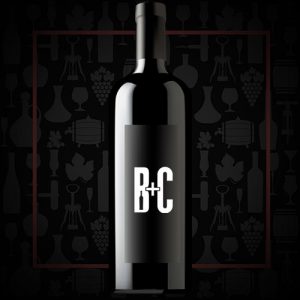Cellar Profile
Nestled along the Sèvre River, in the Nantes region of the Loire Valley, sits the village of Saint-Fiacre. This is Muscadet country and home to owner/winemaker Pierre-Henri Gadais’ exciting new winery, Domaine de la Combe. Gadais is one of the talented and driven new winemakers that is working hard to bring this storied region back to its former glory.The vineyard sits on the southern slopes of a valley carved out of metamorphic rock, with pebbly soil on top of layers of schist. The excellent drainage and steep slopes ensure that, despite the periodic heavy rainfalls in the region, the vines are forced to dig deep into the rocky soil to get water. Grapes are organically and sustainably grown and the estate was certified in organic agriculture in 2021. Gadais believes in minimal intervention in the cellar, utilizing indigenous yeasts and chill stabilizing to avoid malolactic fermentation. He also believes Melon de Bourgogne – the only grape variety he grows – should spend some time sitting on its lees and eschews new oak or barriques. Wines are produced in tiny lots and are some of the most complex Muscadet from the region.
Region
Muscadet sits in the Nantais region of the Loire Valley. Bordered by the foothills of the Mauges and Bocage Verdeen ranges, vineyards are frequently planted on the steep hillsides of the Sèvre and Maine Rivers. Sitting on the soil of the Massif Armoricain, it’s soils are primarily gneiss, schist and granite. There are crushed seashells and sand pockets leftover from retreating oceanic waters in many of the vineyards. Melon de Bourgogne, a white grape, is the only variety allowed in appellation status bottlings. The wines are typically light- to medium bodied, with vibrant acidity.
Vineyard
At the mouth of the iconic Sèvre and Maine Rivers, in the little village of Saint-Fiacre, the Cantrie vineyard is planted in schist soils, known for their intense minerality and great drainage. These are northern facing vineyards, where the grapes do not see as much sun as elsewhere. The wines from here have more marked acidity and a lighter mouth feel, with lower alcohol levels, despite their long growing season and full phenolic ripeness.
Varieties
Melon de Bourgogne is a crossing between Pinot Blanc and the little known Gouais Blanc variety. It was once prevalent in the vineyards of Burgundy (hence its name), until it was ordered to be destroyed by the Burgundians in the 18th century. By then it had a toehold in the Atlantic area of the Loire Valley around Nantes, where it became the dominant grape and the base for Muscadet. Typically high in acid, fresh and mineral driven, it typically does not take to new oak very well. Complexity is gained by spending time on its lees. The best examples can gain some stone fruit notes to go along with the characteristic citrus elements.
Winemaking
Hand-harvested and pressed during the evening to ensure a constant temperature, the grapes are macerated for 12 hours on the skins. Only indigenous yeasts are used during fermentation. This is a lighter-styled wine (only 11% alc), bottled early to preserve primary fruit flavours.
Tasting Notes
A laser-beam, citrus fruit and acid driven quaffer. Tingling acidity, with notes of ripe white grapefruit and lime intermingled with stony minerality. Uncomplicated, unabashedly easy drinking and refreshing. Pair this with good friends and conversation on a patio…you may need more than one bottle for that occasion though!

 info@buyersandcellars.ca
www.buyersandcellars.ca
info@buyersandcellars.ca
www.buyersandcellars.ca